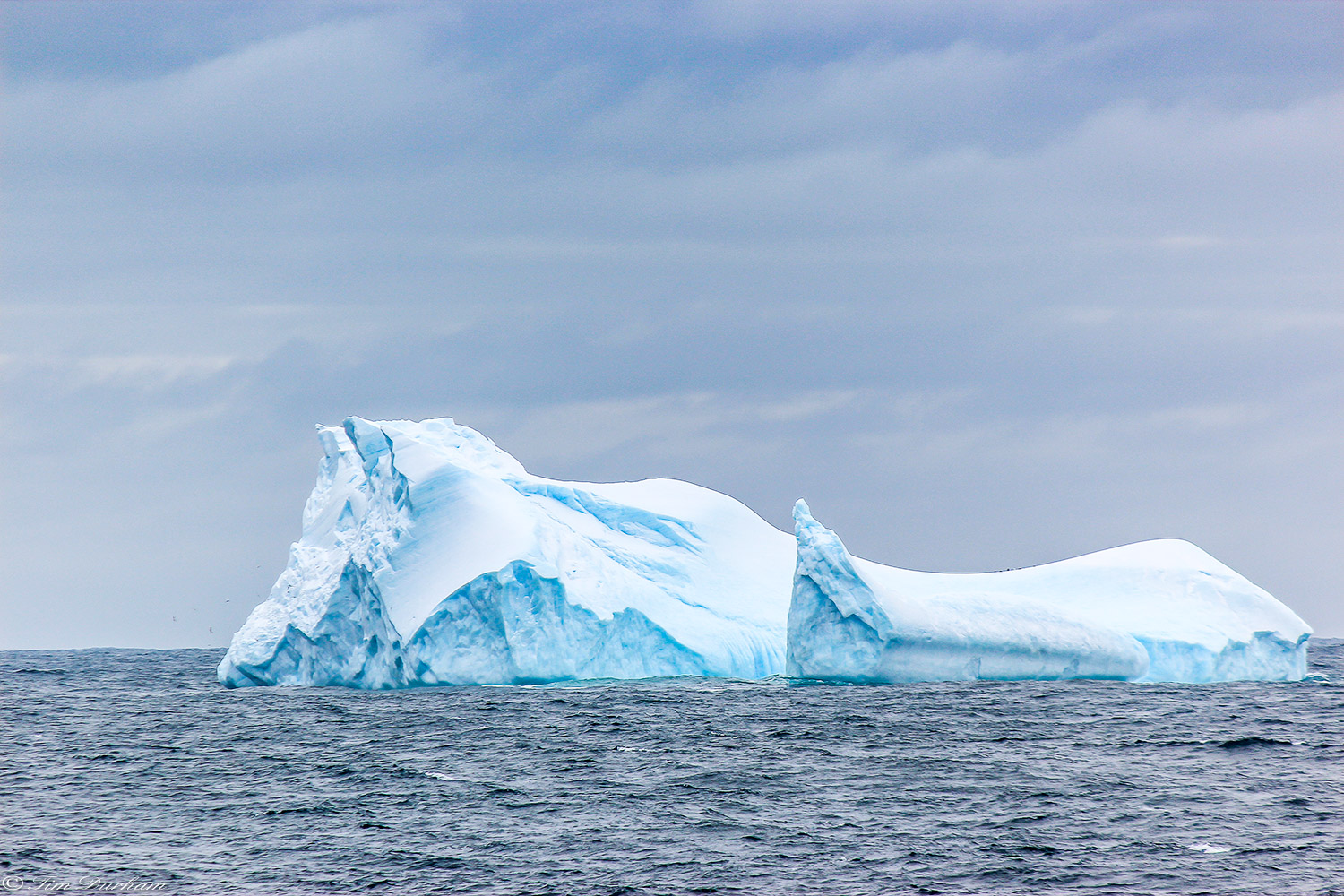South Shetland Islands, Aitcho Island

On the voyage south across the Drake toward the Antarctic peninsula, the sighting of the first iceberg was a momentous event, marking our arrival to a world that people only suspected or imagined a little over a hundred or so years ago.
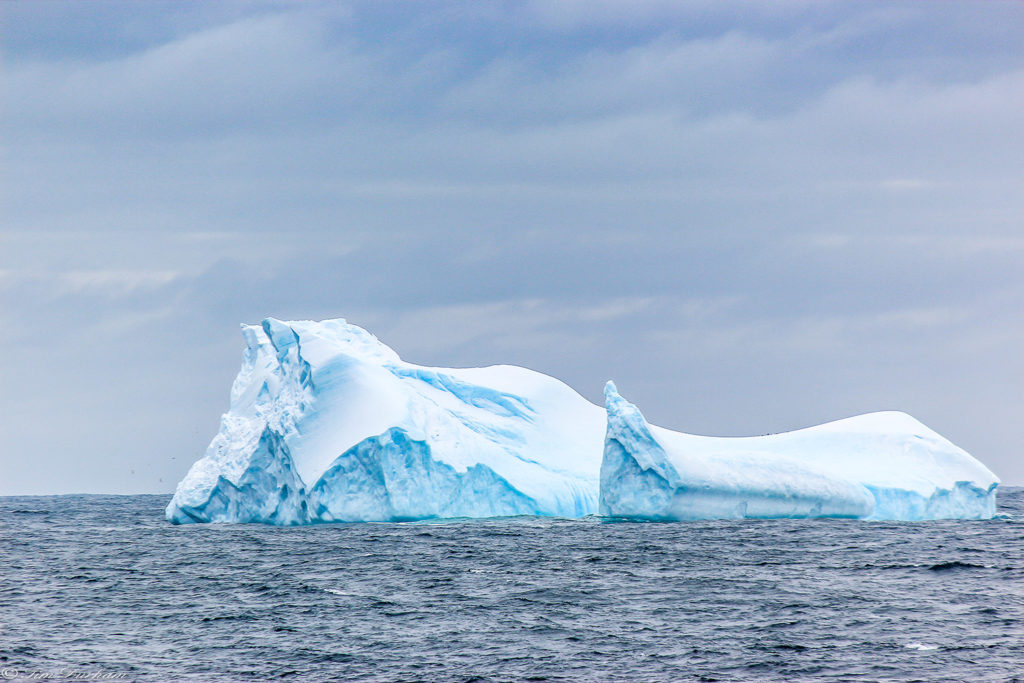
First Iceberg spotted!
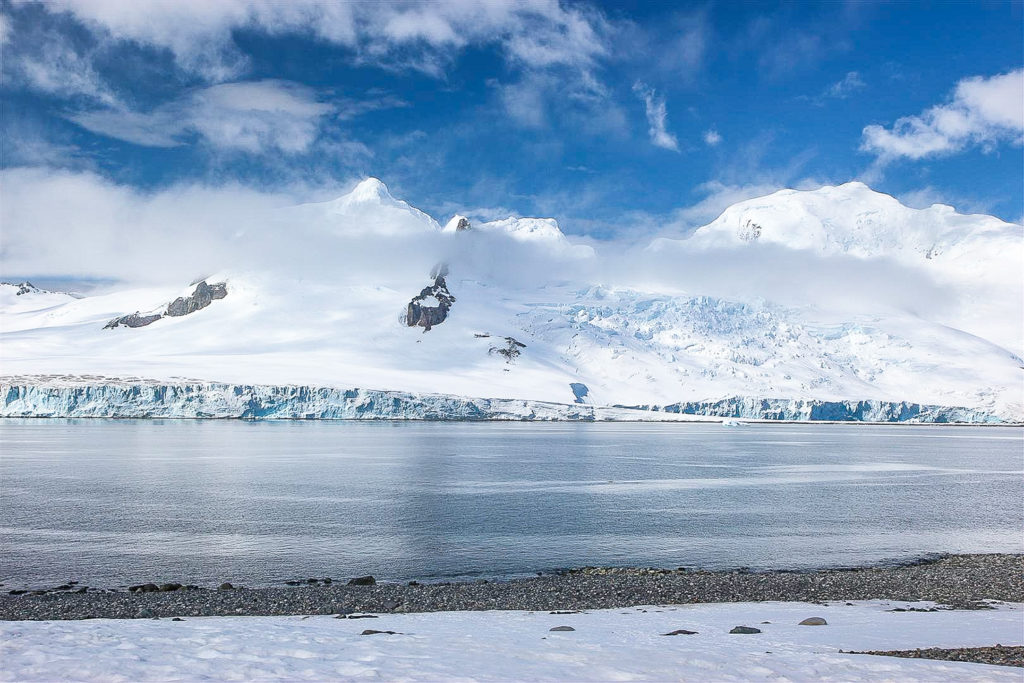
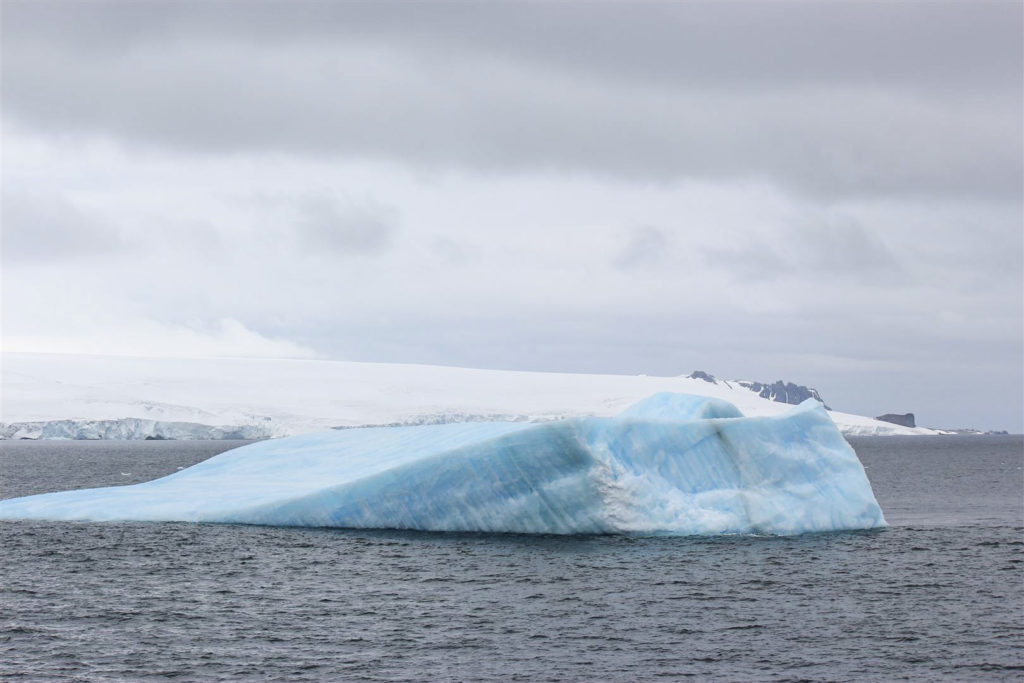
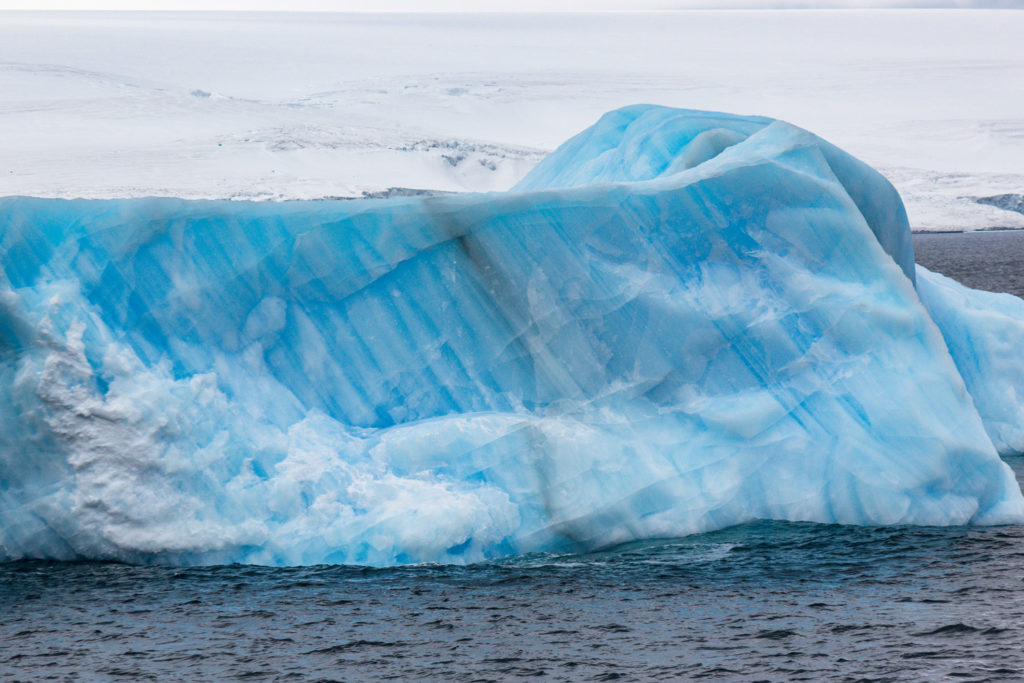

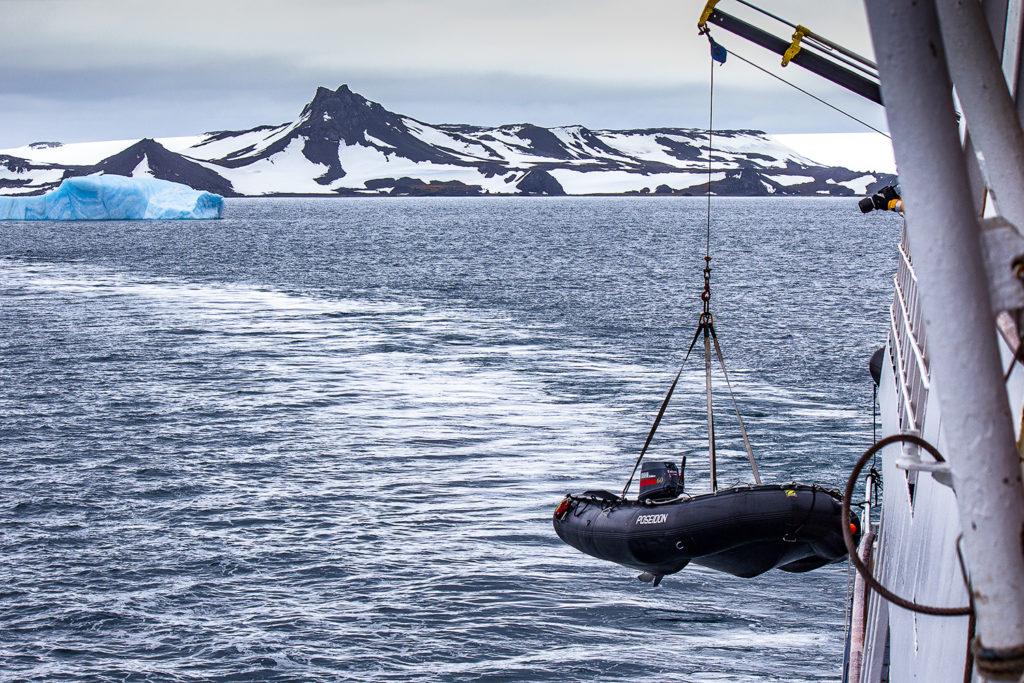
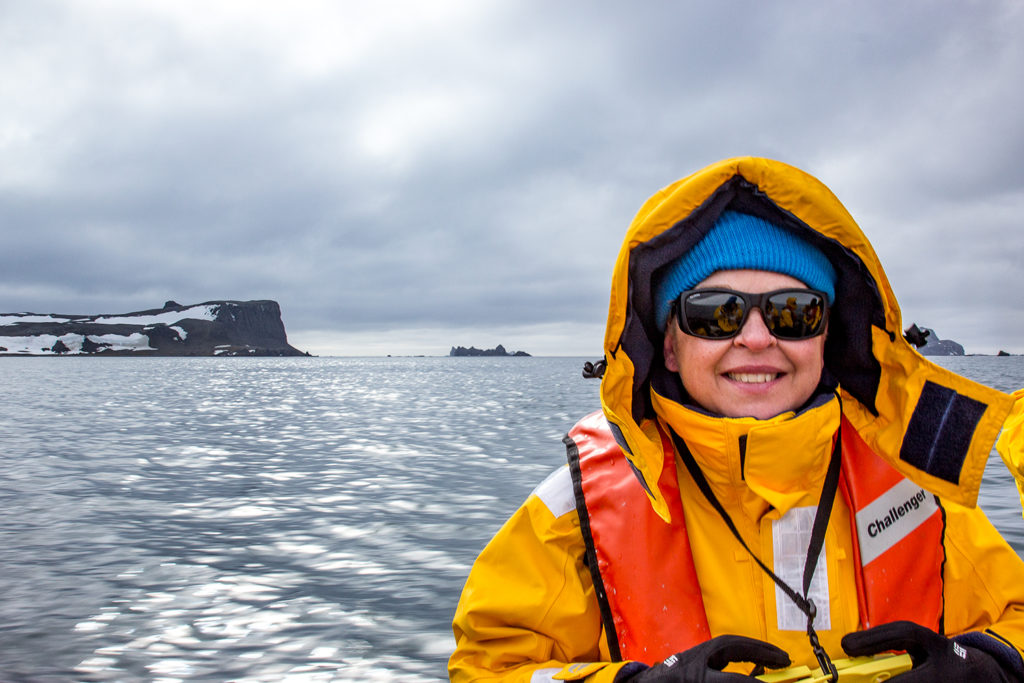 On the way to Aitcho Island
On the way to Aitcho Island
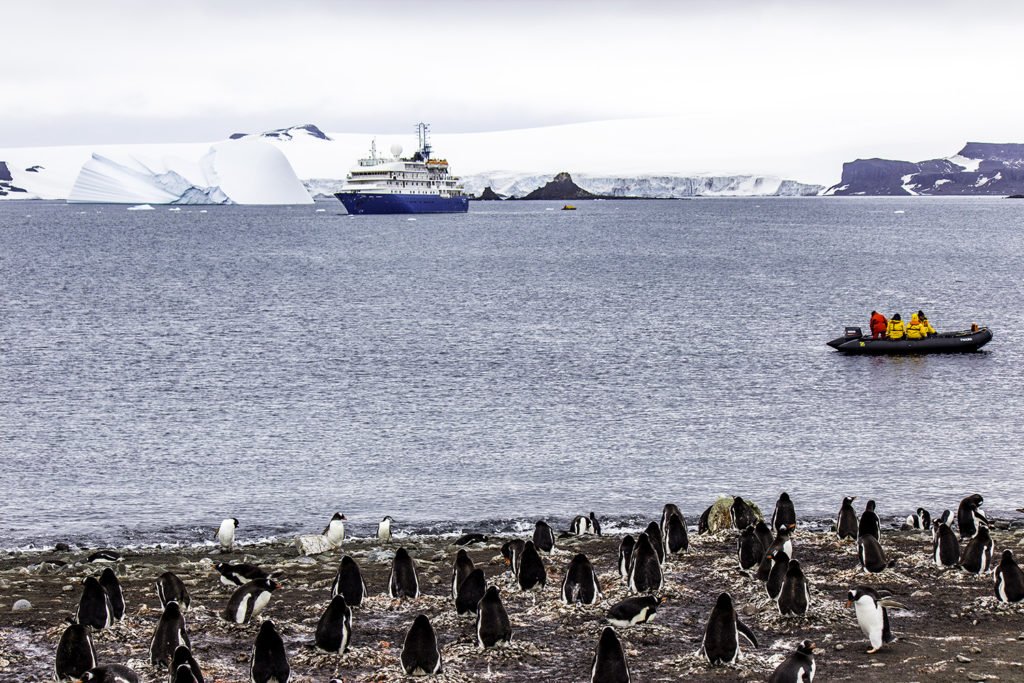
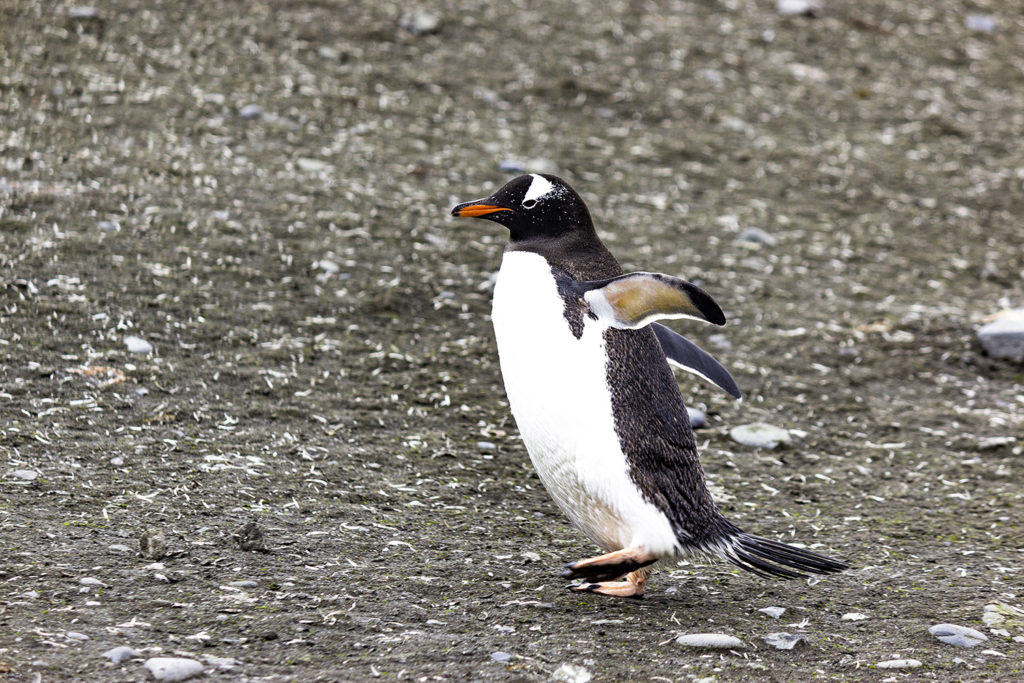
Strolling down to the beach to have lunch
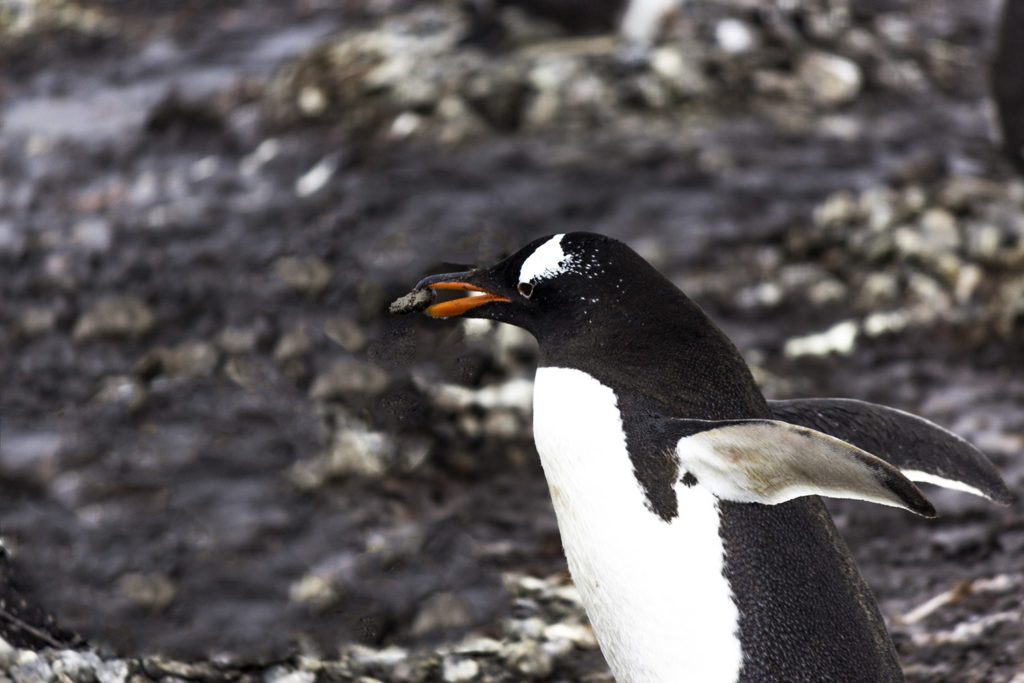
In the two previous images, the first gentoo is just waddling around. Perhaps to go to the beach for lunch. The second image shows one of the funnier traits of the gentoo. Kleptomania. They’re compulsive thieves. This one has just stolen a small pebble from a neighboring bird’s rock nest (they will not nest on snow), and is taking it back to the family nest. Pebbles and small rocks are penguin lucre. Cash. Moolah. And on rocky Barrientos, it’s easier to steal a rock than go find one. All the good rocks have already been found, anyway.
The image below seems to represent a typical penguin nesting area here on the peninsula. It consists of a rocky nest, with one of the parent penguins (they take turns), and one or two chicks. They are strategically placed, with great care, to allow 1) toddling room between nests, plus 2) enough room – maybe 1cm – to avoid getting pecked by the neighbors as you toddle through, and 3) room to lift your cute little brushy tail… and squirt to your heart’s content.

Gentoos with their chicks
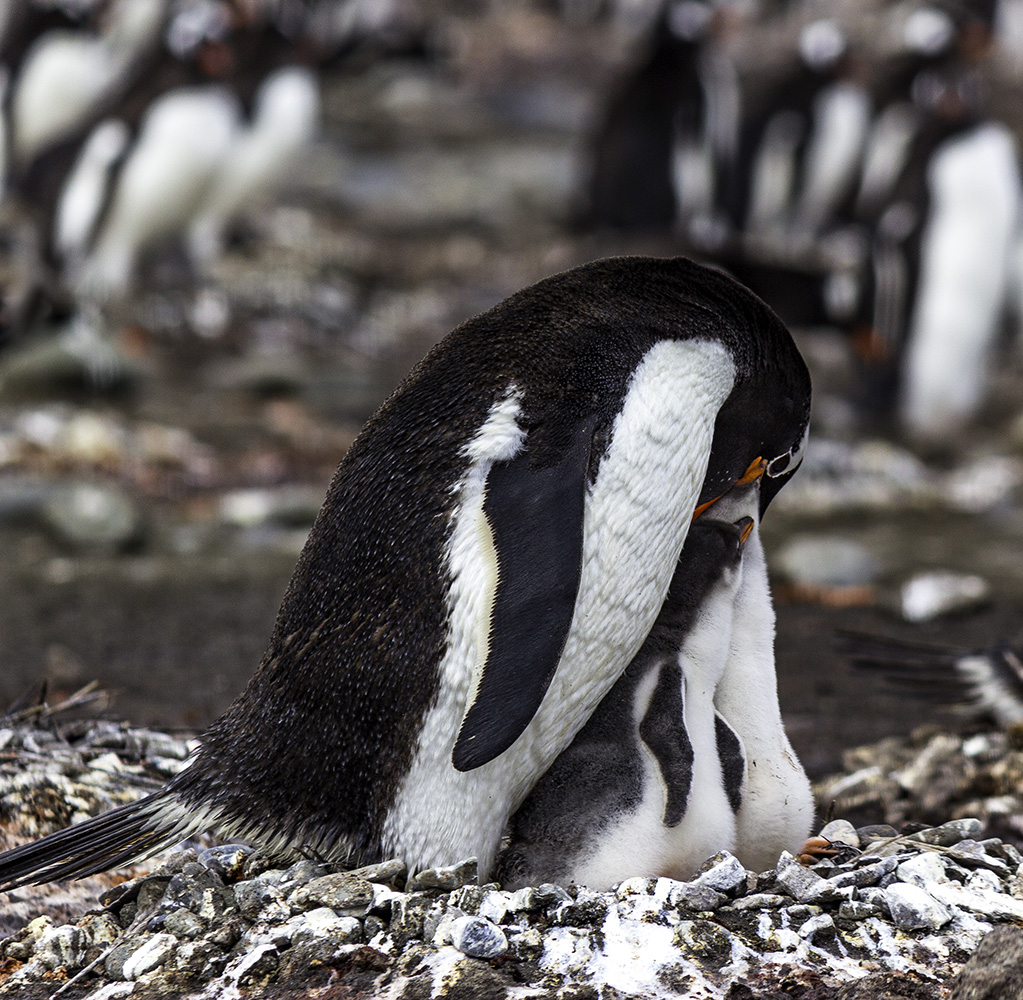
Barf. It’s what’s for lunch today.
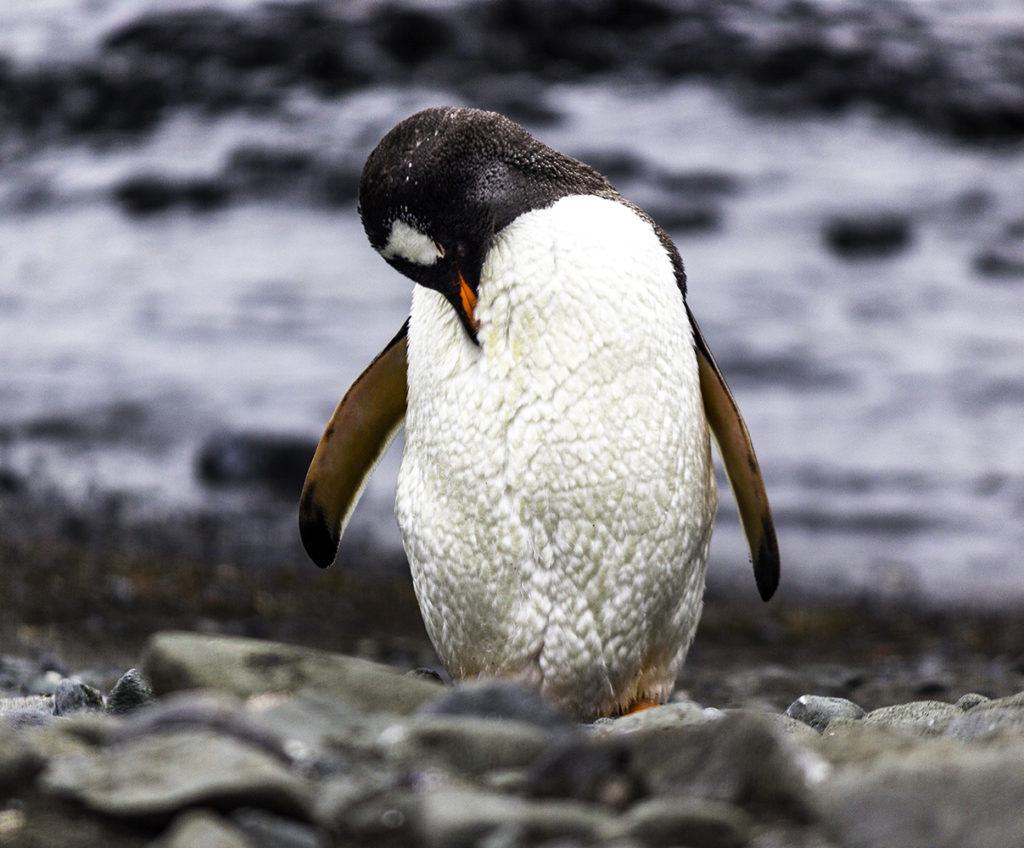
A Gentoo Gussies Itself Up
My favorite penguin is the Chinstrap Penguin. Slightly smaller than a gentoo, but better looking. 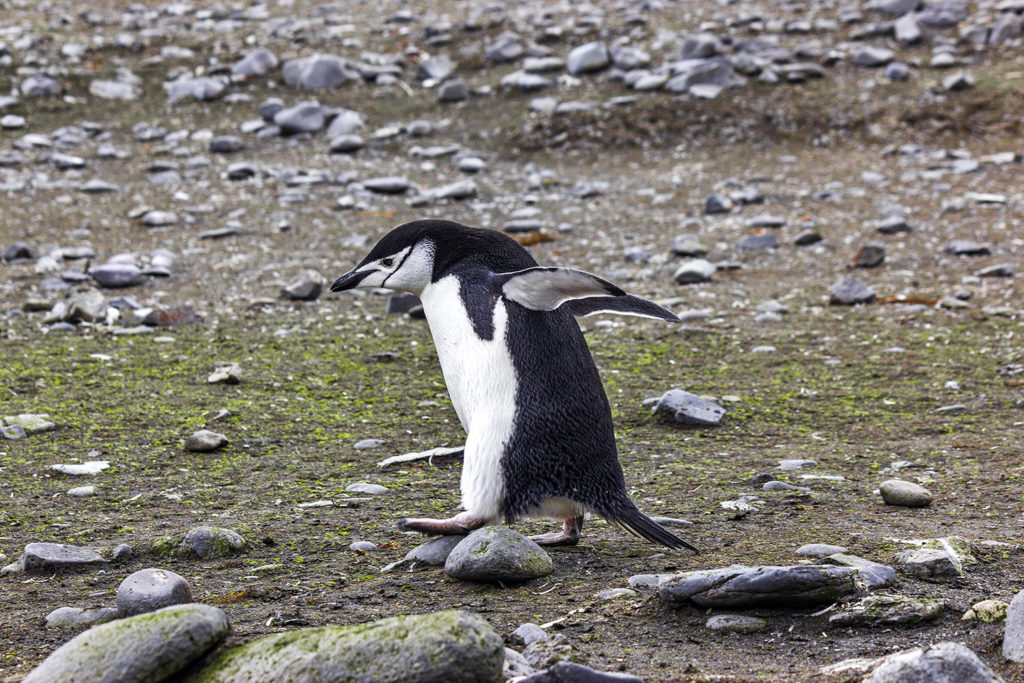
Note that it’s little wings are white underneath… That’s normal.
yet
The underside of this little chinstrap’s wings are pink.
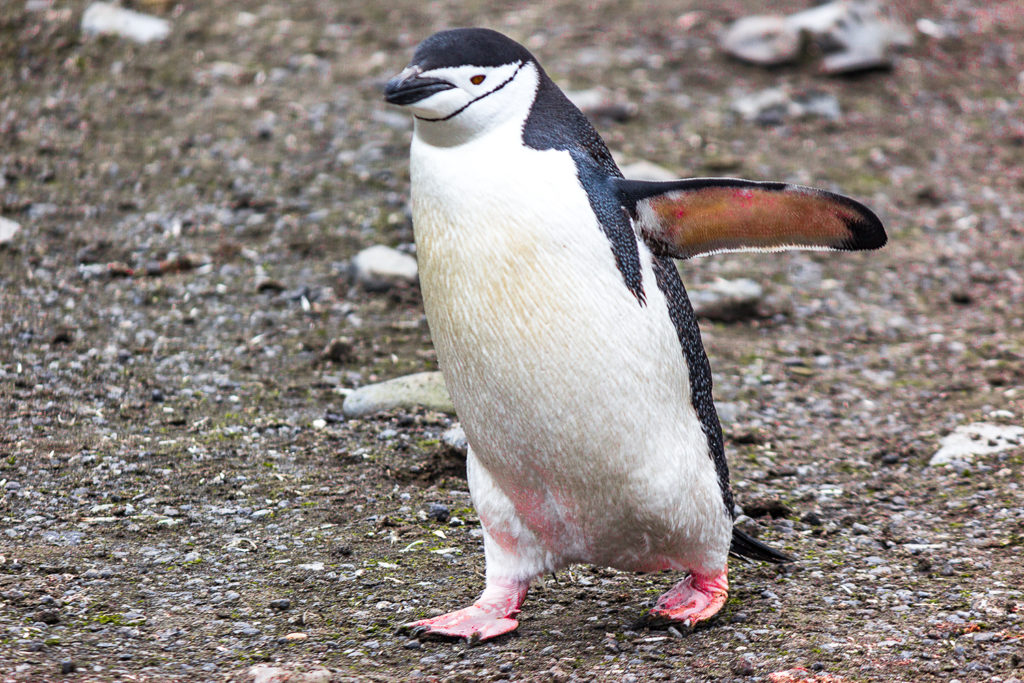
Hottie
A penguin has an outer coat of very tiny, but thick, oily feathers, that cover a down layer beneath. Keeps it dry and warm. Sometimes, a bit too warm when the temperature rises and hovers around -2C gasp, pant… They react by dilating their vessels in their wings to rid them of excess heat.

Joe Cool
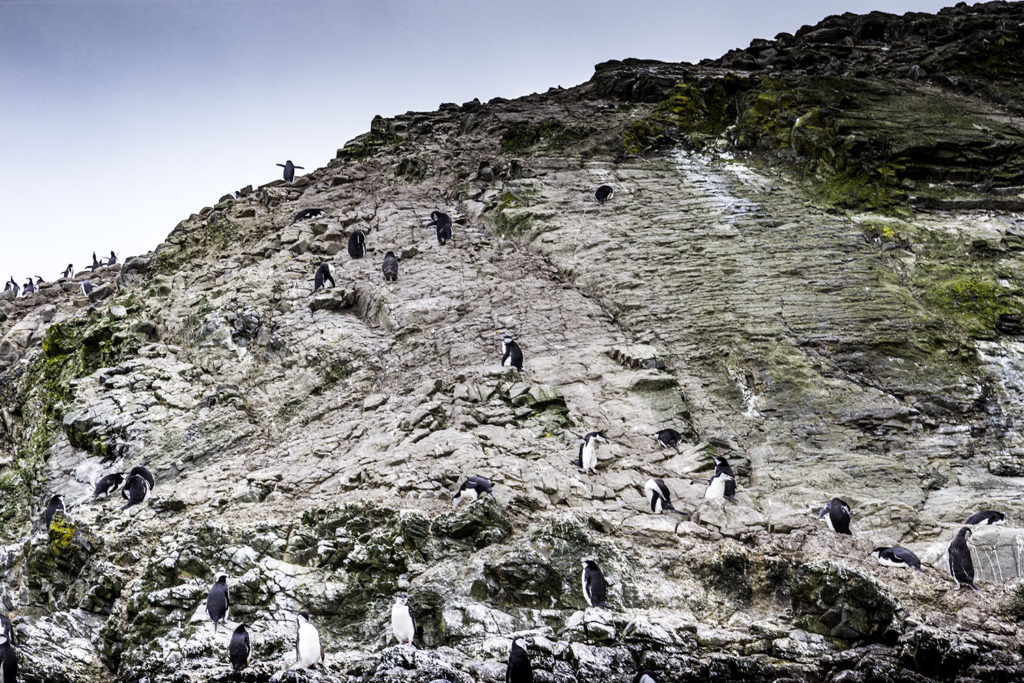

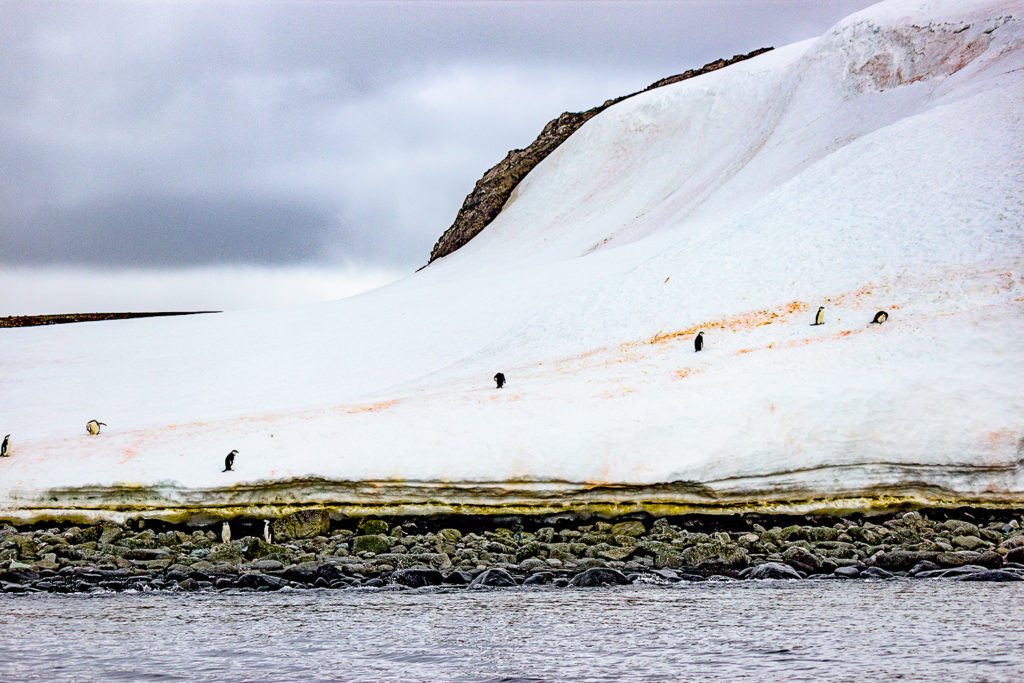
These gentoos, having no nesting area on the beach (too close to predation) begin the hike up a snowy hill in the quest for nesting areas, leaving behind a prodigious pink penguin poo path that marks their progress. POO.
The skua gull is Chief-in-Charge of Antarctic clean-up.

Skua Gull
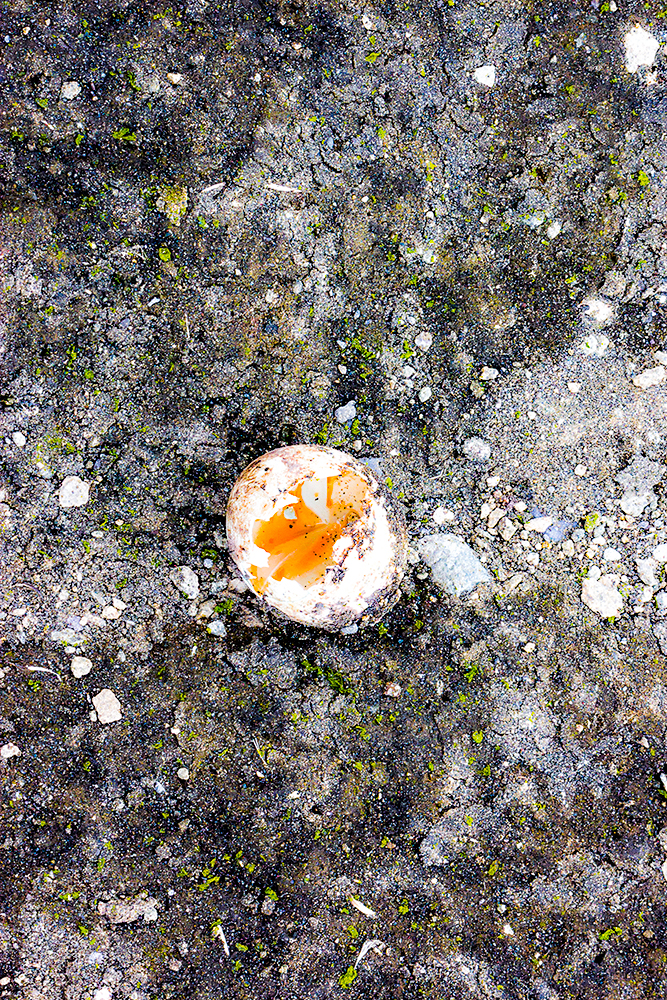
“Happily ever after” for penguins doesn’t occur very often. Less than half the time. Much less, probably…
Another bird on the clean-up list is the Snowy Sheathbill. A jack-of-all-trades, if you will.
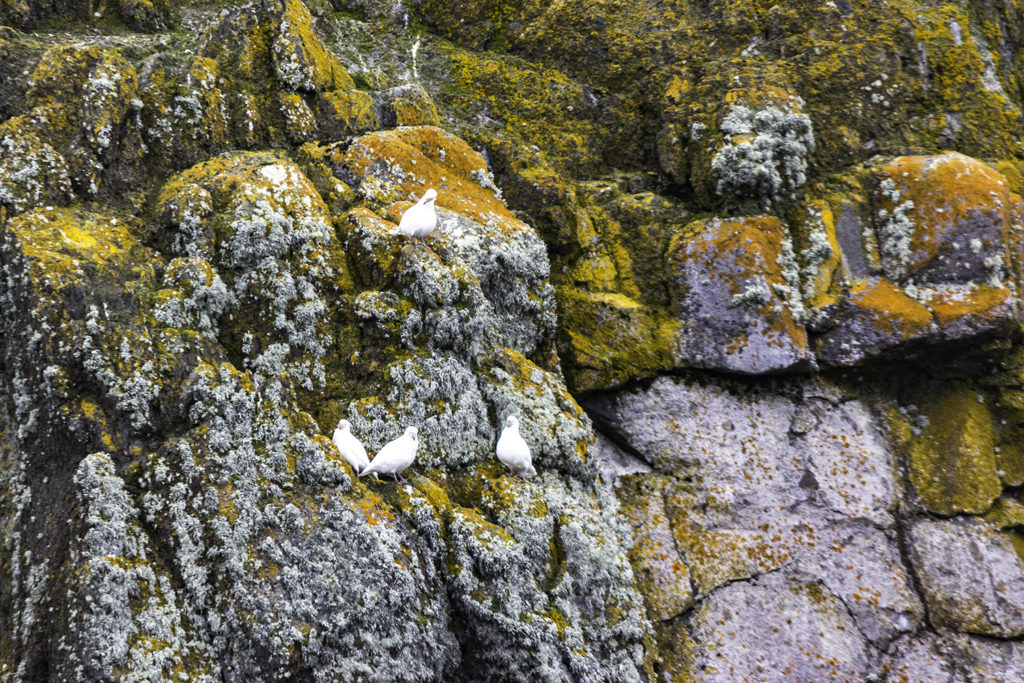
Snowy Sheathbills
The Snowy Sheathbills are the only bird species in Antarctica that doesn’t have webbed feet. They roost well up the cliff-sides out of harm’s way… and oddly enough, usually on one foot. Well adapted to the Antarctic, they eat anything. Eggs, chicks, fish, dead stuff, yes..penguin poo, krill, and even algae. Mmmm good.
All these thoughts of food were making me really hungry. Lucky for me it was time to leave Aitcho and head for the ship. And supper. Ohhhh, I’m hoping that the chef will regurgitate something really tasty. And kind of soupy. And warm. Mmmmmm.
On the way back, our zodiac took us by the cliffs on the end of the island to see some seals…

The word “Coexist” comes to mind…
…and and gave us a brief tour of the iceberg that Sea Spirit had dropped anchor near…
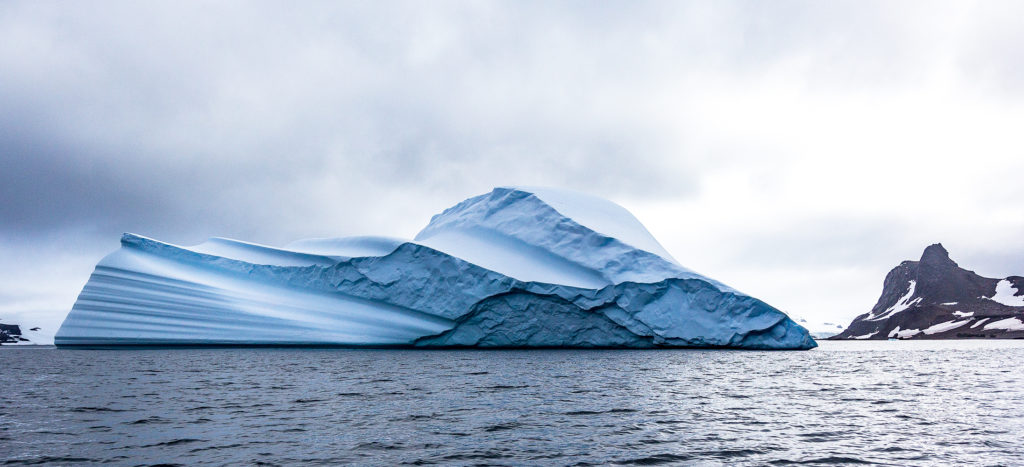
Even prettier up close and personal…
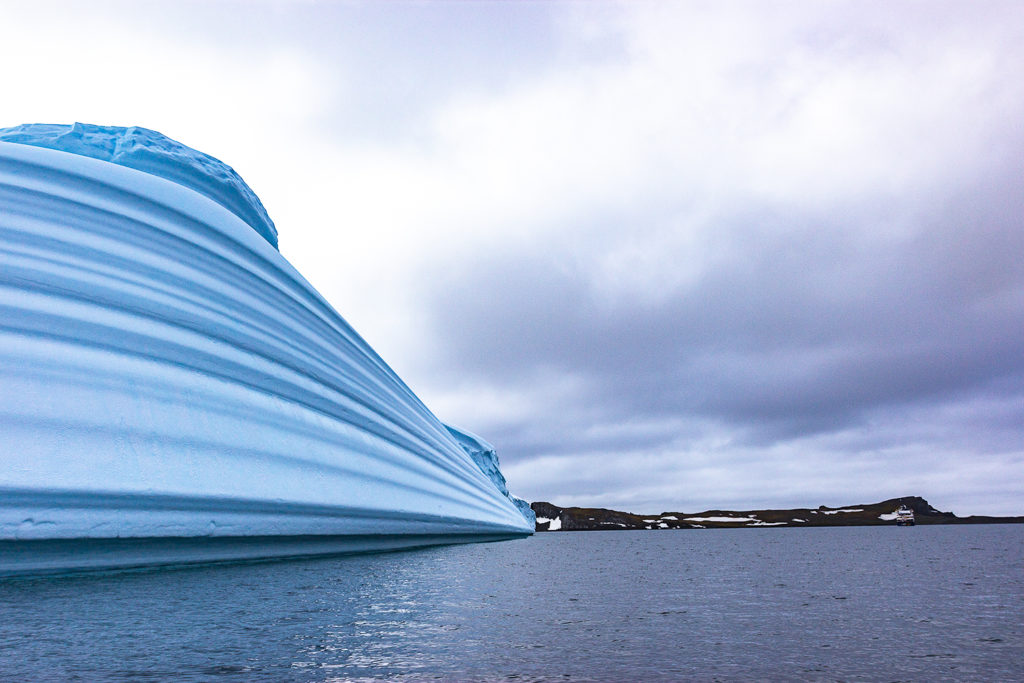
This was a free floating berg. The water, at -1C is generally warmer than the air above, thus the berg slowly melts from below. The ice gradually becomes lighter and floats higher in the water, producing the “age lines” seen above.
This evening, at the bar, I’m in a quiet, pensive mood. I finally determined that I’m in a state of visual overload, unable to process all that I’ve seen. One more sip, and off to dinner with those rowdy-assed Aussies.
Tomorrow, Half Moon Island and Yankee Harbour, South Shetlands.
